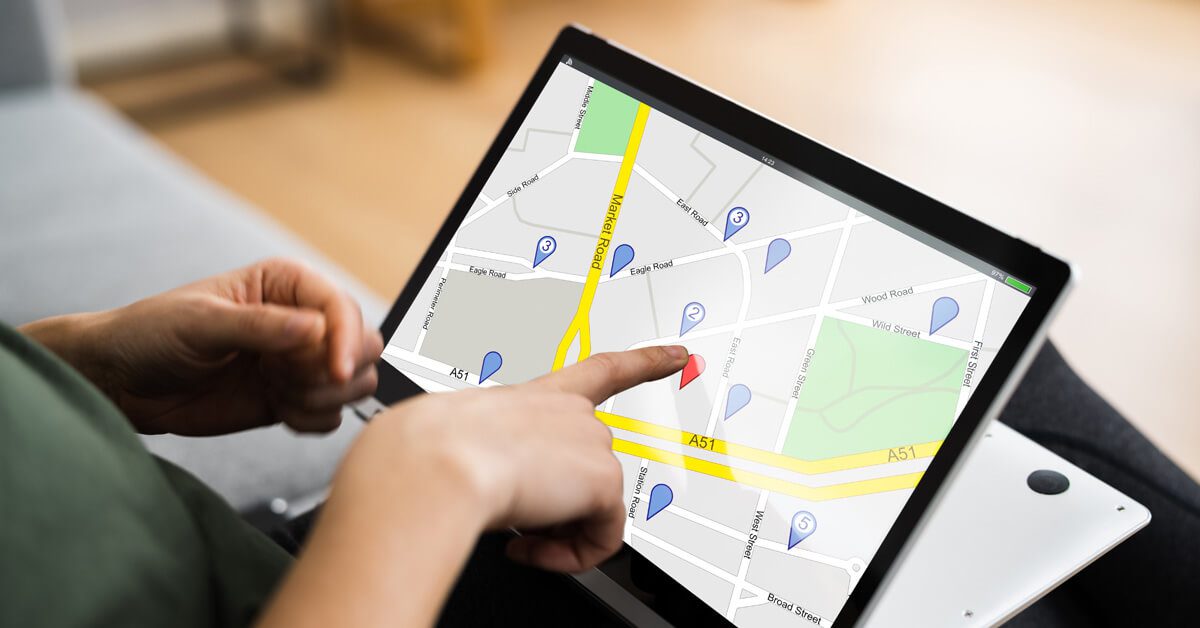Local SEO helps your business appear in search results when people nearby are looking for what you offer. For businesses with more than one location, the strategy requires careful planning and execution to make sure each location gets the visibility it deserves.
We’ll walk you through the steps for how to rank a website with multiple locations so you can improve reach more local customers and grow your business.
Understanding Multiple Location SEO
While multi-location SEO follows many of the same best practices as traditional local SEO, it requires a more detailed approach to ensure each location is individually optimized. This strategy helps every branch appear in local search results and reach the right audience in its area.
Each location serves a unique community with specific needs, and your SEO efforts should reflect that. By tailoring content, local keywords, and online profiles to match the characteristics of each area, you can improve your visibility in local search results. This not only attracts more traffic to your individual locations but also builds trust with customers who value businesses that feel local and relevant to their community.
SEO for multiple locations requires attention to detail, consistency across platforms, and a focus on providing accurate, location-specific information. When you do it correctly, it positions your business as a trusted choice in every market you serve, making it easier to stand out from competitors and connect with potential customers nearby.
How to Rank a Website With Multiple Locations

Follow these tips to optimize your local SEO efforts and ensure your business ranks in every location it serves.
Create Individual Location Pages
Each location needs its own dedicated page on your website. These pages help search engines and customers find the right information about your business in their area.
Include key details such as the address, phone number, business hours, and services offered. Add unique content that highlights what’s special about that location. For example, mention nearby landmarks, customer reviews, or specific services available only at that branch. Avoid copying and pasting the same content across pages, as this can hurt your rankings.
Using clear URLs, such as yourbusiness.com/location-city-name, makes it easier for search engines and users to find the right page.
Pro Tip: Add customer testimonials, photos of the location, and a Google Map embed to make these pages even more engaging.
Leverage Google Business Profiles
Create a separate Google Business Profile (GBP) for each location. These profiles are often the first thing customers see from local search queries—making them a vital part of your local SEO strategy.
Here’s what you should optimize in each of your local business listings:
- Name, Address, and Phone Number (NAP): Ensure these details match exactly across your website and other listings to avoid confusing search engines or customers.
- High-Quality Photos: Upload professional images of your storefront, products, services, and team to give customers a clear sense of your business.
- Detailed Business Description: Write a concise and informative description that includes relevant keywords and highlights what makes your location unique. Again, avoid the urge to copy and paste from location to location.
- Business Category: Choose the most accurate category to help customers and search engines understand your offerings.
- Business Hours: Keep your hours up to date, including special holiday hours, so customers always know when you’re open.
- Posts and Updates: Share regular updates, promotions, or events to keep your profile active and engaging.
- Questions and Answers: Monitor the Q&A section of your profile and provide prompt, helpful responses to customer inquiries.
Use Localized Keywords
Keyword research is the foundation of any effective SEO strategy, and that goes for local SEO tactics, too. Use tools like Google Keyword Planner to find terms that people in each location are searching for.
Incorporate keywords that include the city or neighborhood name, as well as phrases like “near me” that people commonly use in local searches. Add these terms naturally to your page titles, meta descriptions, headers, and content.
For example, instead of just using “best coffee shop,” try “best coffee shop in Denver” or “coffee shop near me.” This helps your pages rank for searches tied to specific areas.
Build Local Backlinks
Backlinks strengthen your local SEO performance by showing search engines that your business is connected to the community. You can do this by partnering with local organizations, sponsoring local events, or collaborating with nearby businesses to earn backlinks from their websites.
Getting listed in local directories can also improve your visibility. Ensure your business information is accurate and consistent across all platforms to avoid confusion for search engines and customers.
Remember, quality matters more than quantity when it comes to backlinks. A few high-quality links from trusted local websites will have a greater impact than dozens of links from low-quality or irrelevant sources. SEO link building services are a great way to get the ball rolling.
Encourage Local Reviews
Reviews are one of the most powerful tools for local SEO. They build trust with potential customers and signal to search engines that your business is reputable.
Ask customers to leave reviews for the specific location they visited. Include a link to your Google Business Profile in follow-up emails, receipts, or on signs at your locations. Highlight positive reviews on your website and social media to encourage more people to visit.
Utilize Structured Data Markup
Schema markup helps search engines understand your business’s locations. It’s a type of code you can add to your website to provide precise data about your locations, such as addresses, phone numbers, and business hours.
This extra layer of information improves your chances of appearing in search results and ensures customers see accurate details for each location. Structured data also helps your business appear in Google’s Local Map Pack, which can bring in more traffic.
Create Hyperlocal Content
Content that resonates with the community can do wonders for your local SEO efforts. Hyperlocal content focuses on specific neighborhoods, cities, or regions where your business operates, making your brand more relevant to the audience in those areas. By writing about topics that matter to local customers, you can improve engagement, drive traffic, and establish a deeper connection with your community.
Here are some examples of effective hyperlocal content ideas:
- Community Event Guides: Create seasonal or monthly guides that highlight upcoming events, festivals, markets, or concerts in the area.
- Local Business Spotlights: Write articles or blog posts featuring other businesses in the area, especially those you partner with. For instance, a gym might spotlight a nearby health food store or juice bar.
- Neighborhood-Specific Tips: Provide helpful tips that cater to your local audience. For example, a landscaping company in Phoenix could share “5 Tips for Maintaining a Desert Garden in Phoenix.”
- Behind-the-Scenes Stories: Share stories about your business’s involvement in local events or initiatives.
- Local History or Fun Facts: Post about interesting historical facts or trivia about the area where your business is located.
- Seasonal Content: Tailor your content to the unique seasons and climate of the area. A heating and cooling company in Chicago might create a blog titled, “How to Prepare Your HVAC System for Chicago Winters.”
- Customer Spotlights or Success Stories: Share testimonials or case studies from customers in a specific location. This could be especially effective for service-based businesses like real estate agencies or fitness studios.
Monitor and Optimize Performance
SEO is an ongoing process. Use tools like Google Analytics and Google Search Console to track the performance of each location. Monitor traffic, rankings, and customer behavior to see what’s working.
Use tools like Google Analytics and Google Search Console to track key metrics for each location. Look at traffic patterns, keyword rankings, and customer behavior to identify what’s working and what needs improvement. If one location is getting less traffic, you might need to optimize its content further or refine its keywords to target more relevant local searches.
Regular updates also help keep your location pages and profiles fresh. Update business hours, promotions, and any changes to services to provide accurate information to both search engines and customers. Adding new content, such as blog posts about local events or updated customer reviews, can also keep your pages engaging and relevant.
Always make data-driven decisions when it comes to search engine optimization. If analytics show that a particular keyword is driving traffic to one location, consider applying a similar approach to other branches. If certain strategies aren’t working, adjust them based on insights from your data.
Level Up Your Local SEO Strategy

Optimizing for local SEO in multiple locations takes effort, but the rewards are worth it. A strong presence in search results helps you connect with more local customers, grow your reputation, and drive more traffic to each location.
If you’re ready to take your strategy to the next level, consider professional SEO services to guide your efforts. With a clear plan and consistent optimization, your business will stand out in every community it serves.







